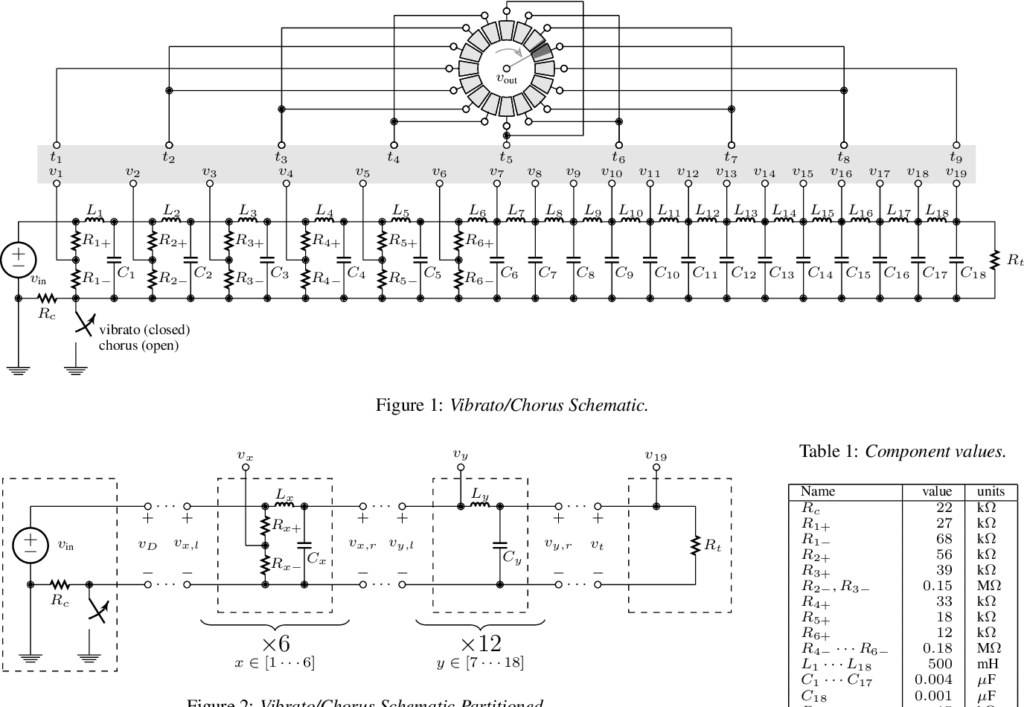My first experiment was to simulate the delay line with Pure Data, based on the research carried out in the previous phase of this project. Originally, the analog delay line is part of the Hammond Vibrato Scanner unit and it incorporates a series of second-order audio filter stages where each stage is shifted in phase relative to the previous one. This results in an increasing time delay between every successive step of the line (about 50μs per filter stage). This is then fed into a scanner, which is a single-pole 16-throw air-dielectric capacitor switch connecting nine selected taps from the line to the output.
As the scanner gradually transitions between these taps, it alternates the phase shift applied to the sound, causing slight variations to the pitch that result in a vibrato effect. The depth of the vibrato depends on the width of the frequency shift fed into the scanner, which means that scanning about one-third of the delay line would produce a lighter vibrato effect while scanning the whole line would significantly increase its depth. In addition to the vibrato, a chorus effect can also be achieved by mixing the dry input signal with multiple outputs on the delay line, or a chorus-vibrato by mixing the dry signal with the output of the vibrato.
